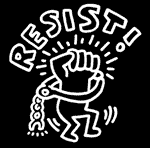Student Power: A Brief Primer, Part 1

What is student power?
Student power is, concretely, the extent of decision-making power and sovereignty afforded to each student, and the student body as a whole. This power may be in the greater political and economic sphere, but primarily the power is in relation to the institutions and structures of the campus in which the student resides.
In terms of campaigning for student power, or being a student power organizer, there is a crucial difference separating that from all other student campaigns and organizers; that is what is being demanded of the University.
When you’re campaigning for student power, be it student trustee members, a recognized student union, or reshaping the disciplinary system, you are making structural demands. This differs from policy demands that are usually made by activists. An example of a policy demand would be to demand the University divest from ExxonMobil. An example of a structural demand would be to demand student seats on the investment committee itself.
The vast majority of activism that goes on on campus now – in fact, has ever gone on on campus – revolves around policy demands. Recycling. Green buildings. Securing funding for progressive events or causes.
Now what’s so wrong with that? Those are all good, sound, and just goals. The problem here is that achieving one does not guarantee – or even improve the likelihood of – the success of any of the others. Almost every time we have to start from rock bottom with the start of the next campaign.
We only have four years to make a difference here at college, and to best use our time we need each success we have to lay the groundwork for future successes. We can’t do that with policy demands. We can with structural demands. With policy demands we are essentially telling those in power what to do; with structural demands we are determining who is in power in the first place.
It’s very much worth saying that the pursuit of greater student self-governance, along with direct, militant opposition to University Administration itself, is nothing new to the American stage, and in fact has been a hallmark of organized students since before the Revolutionary War.
W.H. Cowley, an educational historian, gives us a delightful example of campus unrest during the Revolutionary War:
All of the nine existing colleges either closed down or greatly limited their operations because most of their eligible students had joined the militia or the Continental Army, but more relevant here are instances of students frustrating the British and discomfiting Loyalists. Two such illustrate these numerous harassments: Harvard students drove out of Cambridge the tutor who directed British troops to Lexington and “the shot heard round the world”; the soapbox harangues and the pamphlets written by an eighteen-year-old Kings College undergraduate named Alexander Hamilton helped arouse the mob that, despite his pleas against violence, three weeks later forced President Myles Cooper to seek refuge on a British warship bound for England.